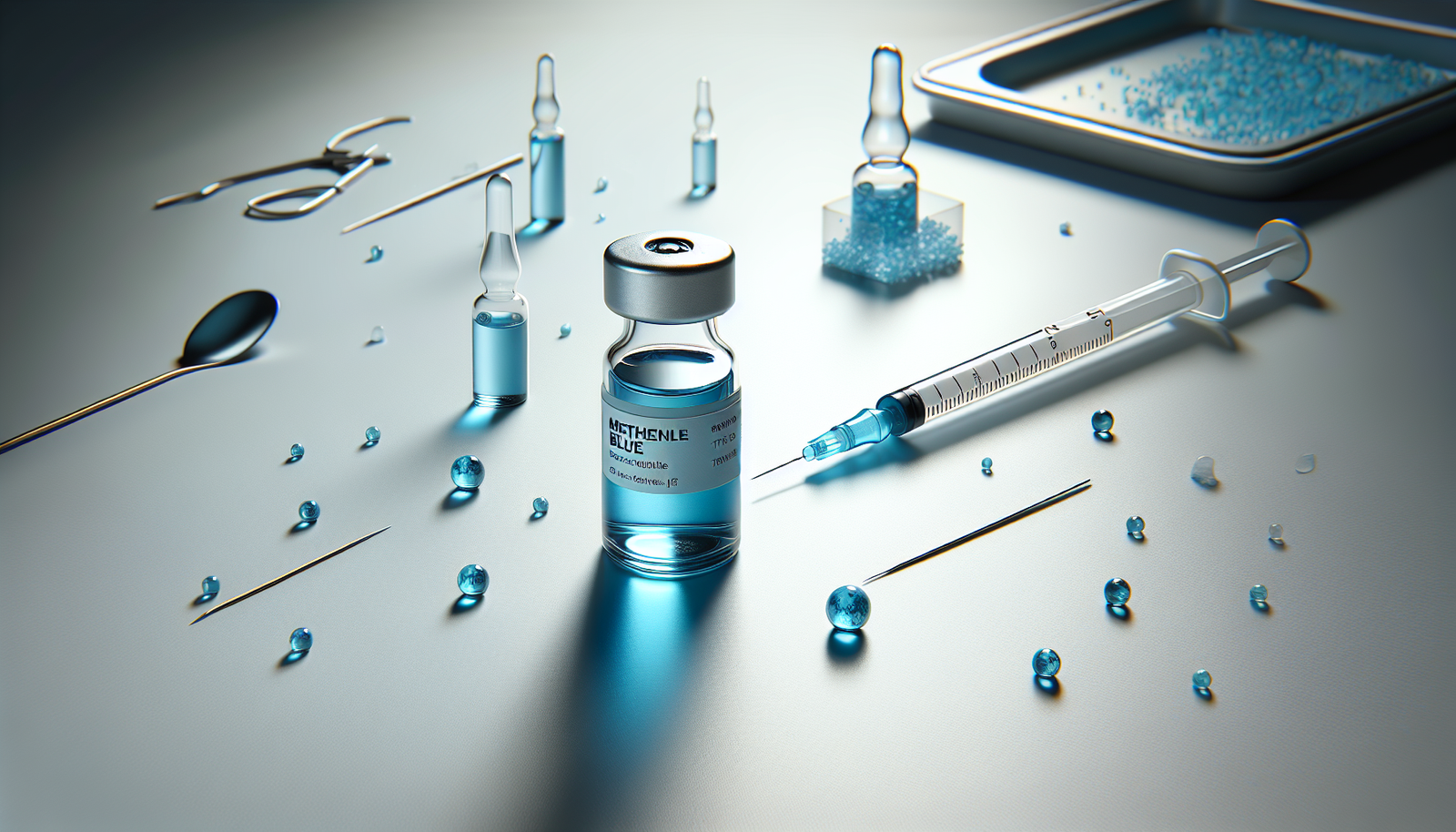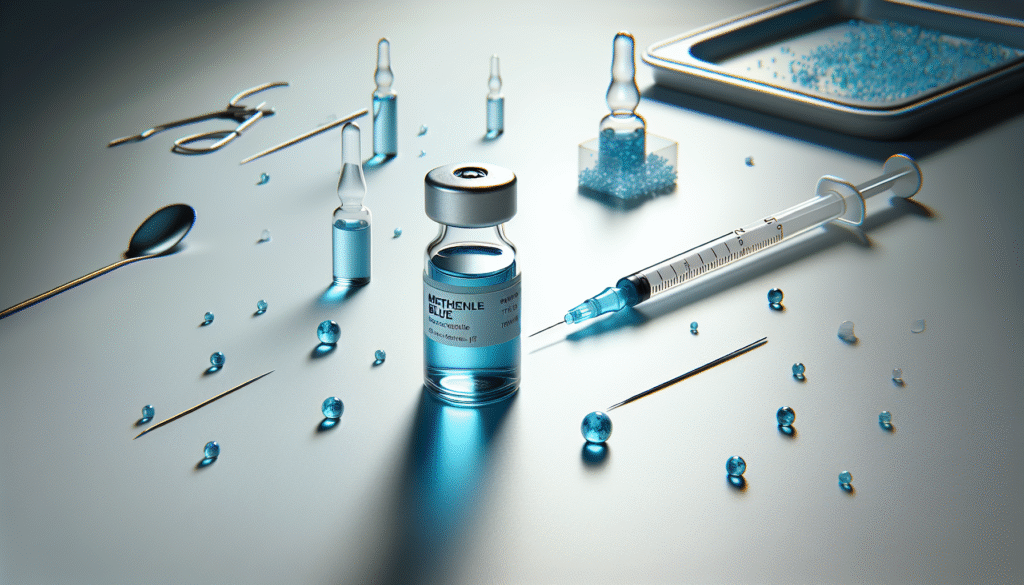
Have you ever considered the potential pitfalls of using methylene blue? While this compound has garnered attention for its various applications, ensuring your usage is effective and safe is paramount. To optimize your experience and outcomes, it is essential to understand common mistakes to avoid.

Understanding Methylene Blue
Methylene blue is a synthetic dye that has been utilized in various fields, including medicine, biology, and even as a treatment for certain conditions. Its applications range from a dye for textiles to a therapeutic agent for conditions like methemoglobinemia and potential cognitive disorders. As you engage with this compound, awareness of its properties and implications is crucial.
What is Methylene Blue?
Methylene blue is chemically known as methylthioninium chloride. It possesses unique redox properties, allowing it to influence cellular processes. This dye interacts with mitochondrial function, exhibiting potential benefits beyond its initial uses. Understanding its biochemical properties will empower you to use it more effectively.
Applications and Benefits
Methylene blue is wholly versatile and has been lauded for various potential benefits. In medicine, it has applications in treating methemoglobinemia, a condition where hemoglobin is not able to carry oxygen effectively. In the realm of cognitive enhancement, it has gained attention for its potential neuroprotective effects.
The compound is also being explored as a treatment for Alzheimer’s disease, showing promise in animal studies for improving cognitive function. Additionally, it has been used in microbiology as a staining agent.
Common Misconceptions About Methylene Blue
As you navigate the world of methylene blue, be wary of common misconceptions that could lead to misapplications. Misinformation can impact the efficacy of how you use this compound, potentially leading to detrimental outcomes.
Methylene Blue is Only a Dye
A prevalent misconception is that methylene blue serves solely as a dye. While its use in staining biological samples is well-recognized, it is essential to acknowledge its therapeutic properties. Ensure you are not limiting your understanding of methylene blue to its aesthetic applications.
It’s Safe for Everyone
Another mistake is assuming that methylene blue is safe for all individuals. Certain populations, such as pregnant individuals or those taking specific medications, may experience harmful interactions. Always consider your health conditions and consult a healthcare professional before usage.
Dosage and Administration Errors
Incorrect dosage can lead to adverse effects and a lack of desired outcomes. Knowing how to appropriately dose and administer methylene blue is crucial for your safety and effectiveness.
Understanding Dosage Recommendations
methylene blue dosage can vary significantly based on its application—whether for medical treatment or research purposes. The recommended dosage typically falls within 1-2 mg/kg for treating adults with methemoglobinemia, but adjustments must be made for other uses.
| Application | Dosage Range |
|---|---|
| Methemoglobinemia | 1-2 mg/kg |
| Cognitive enhancement (research) | 0.5-4 mg/kg daily |
| Staining in microbiology | Varies by sample type |
It is vital that you follow any prescribed dosage closely and avoid the common pitfall of self-medicating beyond the recommended amounts.
Timing of Administration
When utilizing methylene blue, the timing of administration can also significantly influence effectiveness. For instance, if you are considering it for cognitive enhancement, taking it during moments of acute stress can yield different results than consistent long-term usage.
Route of Administration
Methylene blue can be administered via various routes, including intravenous, oral, and topical applications. Each route has its advantages and potential pitfalls.
- Intravenous: Provides rapid action but requires professional administration.
- Oral: Convenient but may involve slower absorption and bioavailability.
- Topical: Useful for localized effects but may result in staining skin or fabrics.
Always choose the route of administration that aligns with your needs and seek guidance if uncertain.
Overlooking Potential Interactions
Failing to consider drug interactions can compromise the safety and efficacy of methylene blue. A thorough understanding of how methylene blue interacts with other drugs is essential.
Common Drug Interactions
Methylene blue has a broad interaction profile, particularly with medications such as:
- Serotonergic Drugs: Risk of serotonin syndrome when combined with SSRIs, SNRIs, and other antidepressants.
- MAO Inhibitors: It should not be used concurrently with monoamine oxidase inhibitors due to the risk of hypertensive crises.
- Antidepressants: Consult a healthcare provider if you are taking any psychiatric medication.
Always disclose your current medications to your healthcare provider to ensure safe consumption of methylene blue.
Dietary Interactions
Certain foods can also interact with methylene blue, though less commonly discussed than drug interactions. For instance, consuming large amounts of tyramine-rich foods—like aged cheeses and cured meats—can lead to a hypertensive crisis if combined with certain medications incompatible with methylene blue.

Failing to Monitor Side Effects
Overlooking potential side effects can lead to serious complications. Methlyene blue is generally well-tolerated, yet you should remain vigilant for adverse reactions.
Recognizing Common Side Effects
Some common side effects associated with methylene blue include:
- Nausea or vomiting
- Dizziness
- Headaches
- Urine discoloration (a benign but noticeable effect)
Being proactive about monitoring your health after administration allows you to identify any adverse reactions early.
| Side Effect | Action |
|---|---|
| Nausea | Consider taking with food |
| Dizziness | Avoid operating machinery |
| Urine discoloration | Generally harmless |
Reporting Side Effects
If you experience unexpected side effects, it is crucial to report them to your healthcare provider promptly. They can provide guidance on whether to continue using methylene blue or adjust your dosage.
Mishandling Storage and Handling
Improper storage of methylene blue can compromise its effectiveness. Understanding best practices in handling and storage is critical for maintaining its integrity.
Ideal Storage Conditions
Methylene blue should be stored in a cool, dry place, away from direct sunlight. Avoid fluctuations in temperature, as they may affect its potency. Here are some best practices for storage:
- Keep in Original Container: Protect from contamination.
- Seal Tightly: Prevent exposure to air and moisture.
- Check Expiration Date: Don’t use expired products.
Safe Handling Practices
When handling methylene blue, utilize personal protective equipment (PPE), such as gloves and eye protection, especially in laboratory settings. The compound can stain skin and surfaces, which can lead to long-term discoloration.
Focusing Solely on Instant Results
It is easy to focus solely on immediate effects when using methylene blue. However, understanding the long-term implications is vital to leveraging its full benefits.
Importance of Consistency
Whether using methylene blue for cognitive enhancement or medical conditions, consistent usage is often necessary to observe sustained results. Engaging regularly with the compound—while adhering to recommended dosages—can foster a gradual improvement rather than immediate, fleeting effects.
Managing Expectations
Understand that, like any supplement or medication, methylene blue is not a one-size-fits-all solution. Your outcomes depend on various factors including your health condition, dosage, and accompanying lifestyle choices. Educate yourself on realistic expectations.
Neglecting Professional Guidance
One of the biggest mistakes is ignoring the need for professional guidance. Consulting experts not only enhances safety but also optimizes outcomes.
Importance of Consulting a Healthcare Provider
Before starting any new treatment or supplement, including methylene blue, it is crucial to consult a knowledgeable provider. They can offer insights into appropriate dosages, potential interactions, and the necessity for monitoring.
Utilizing Resources
Seek reputable resources to learn more about methylene blue, including peer-reviewed articles and guidelines from medical organizations. Let your healthcare provider assist you in navigating the available data to make informed decisions.
Disregarding Individual Variability
Individual responses to methylene blue can vary dramatically; assuming a universal effect can lead to disappointment or misunderstanding.
Genetic Factors
Genetic factors can influence how your body metabolizes substances like methylene blue. Genetic variations can lead to different treatment outcomes or side effects among individuals. Personalizing your approach based on these factors is essential.
Health Conditions
Pre-existing health issues can also affect how your body responds to methylene blue. For instance, individuals with liver or kidney impairments may process the compound differently, necessitating adjustments in dosing.
Conclusion: Prioritizing Safe and Effective Use
Navigating the use of methylene blue should be approached with caution and diligence. By avoiding common mistakes—such as misunderstanding its applications, overlooking potential interactions, and neglecting professional guidance—you empower yourself to utilize this compound safely and effectively. Embracing an informed and cautious approach will ensure that you harness the benefits of methylene blue while safeguarding your health.